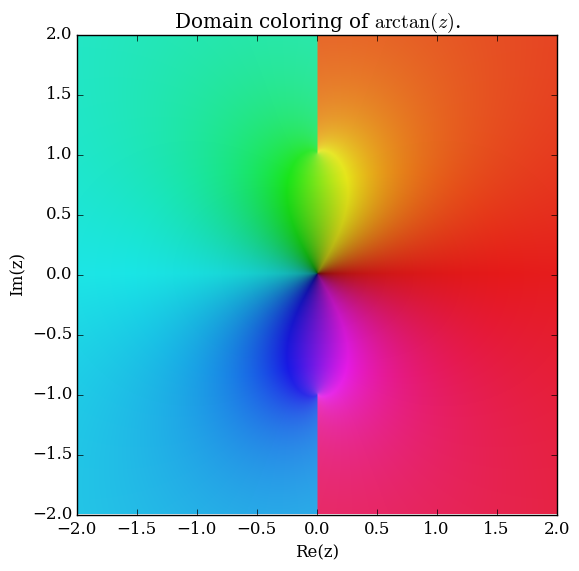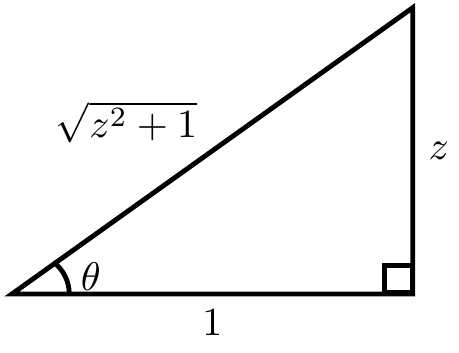Difference between revisions of "Arctan"
| Line 4: | Line 4: | ||
<gallery> | <gallery> | ||
File:Arctan.png|Graph of $\mathrm{arctan}$ on $[-1,1]$. | File:Arctan.png|Graph of $\mathrm{arctan}$ on $[-1,1]$. | ||
| − | File:Complexarctanplot.png|[[Domain coloring]] of $\mathrm{arctan}$ on $[-2,2] \times [-2,2] \subset \mathbb{C}$ | + | File:Complexarctanplot.png|[[Domain coloring]] of $\mathrm{arctan}$ on $[-2,2] \times [-2,2] \subset \mathbb{C}.$ |
</gallery> | </gallery> | ||
</div> | </div> | ||
Revision as of 22:47, 15 May 2016
The $\mathrm{arctan}$ function is the inverse function of the tangent function.
- Arctan.png
Graph of $\mathrm{arctan}$ on $[-1,1]$.
Domain coloring of $\mathrm{arctan}$ on $[-2,2] \times [-2,2] \subset \mathbb{C}.$
Properties
Proposition: $\dfrac{d}{dz} \mathrm{arctan}(z) = \dfrac{1}{z^2+1}$
Proof: If $\theta=\mathrm{arctan}(z)$ then $\tan \theta = z$. Now use implicit differentiation with respect to $z$ yields $$\sec^2(\theta)\theta'=1.$$ The following triangle shows that $\sec^2(\mathrm{arctan}(z))=z^2+1$:
Substituting back in $\theta=\mathrm{arccos(z)}$ yields the formula $$\dfrac{d}{dz} \mathrm{arccos(z)} = \dfrac{1}{\sec^2(\mathrm{arctan(z)})} = \dfrac{1}{z^2+1}. █$$
Proposition: $\displaystyle\int \mathrm{arctan}(z) = z\mathrm{arctan}(z) - \dfrac{1}{2}\log(1+z^2)+C$
Proof: █
Proposition: $\mathrm{arctan}(z) = \mathrm{arccot}\left( \dfrac{1}{z} \right)$
Proof: █
Relationship between arctan and hypergeometric 2F1

